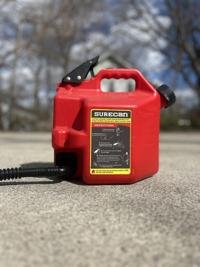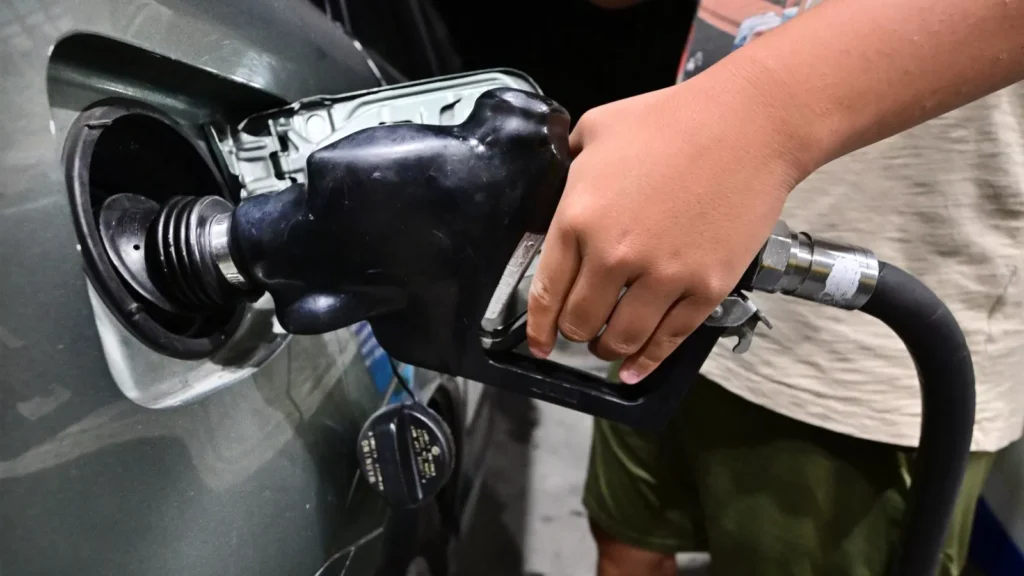Gas can redesign is officially on the federal radar. After more than a decade of consumer complaints, safety hazards, and inefficient designs, the White House is stepping in to address one of America’s most unexpectedly annoying problems — the modern gas can.
With growing frustration among users and experts alike, the federal government has launched an initiative calling for manufacturers to rethink the way gas cans are made. This marks a potential turning point for an item found in nearly every garage across the country — but which has become a source of headaches for millions.
A Problem Hidden in Plain Sight
The average person may not think twice about a gas can — until they have to use one.
Since 2009, gas can designs have been heavily influenced by Environmental Protection Agency (EPA) regulations meant to reduce evaporative emissions. While the intentions were good — to limit the release of harmful vapors and improve safety — the result has been widespread user dissatisfaction.
Modern gas cans typically come with child-proof caps, ventless designs, and complex nozzles that require awkward pushing or twisting to pour fuel. Instead of helping, these features have often made things worse:
- Spills are more frequent.
- Users report broken or stuck nozzles.
- Fuel pours slower, requiring more effort.
- People resort to dangerous hacks like removing parts.
Online forums, YouTube rants, and even Amazon reviews are filled with frustrated comments. The terms “spill-proof” or “safety nozzle” have become punchlines for what many see as a design failure.
The White House Steps In
In a surprising but welcome move, the Biden administration is now calling for a gas can redesign — encouraging American manufacturers to submit new, user-friendly versions that balance safety, efficiency, and environmental responsibility.
A White House official stated, “We’re not talking about rocket science here. This is about making an everyday tool better, safer, and more practical for the people who use it.”
The White House Office of Science and Technology Policy (OSTP) has partnered with the Consumer Product Safety Commission (CPSC) and the EPA to explore solutions. While the current regulations are not being rolled back, there is new momentum behind rethinking how the rules are implemented.
What’s So Wrong With Today’s Gas Cans?

Let’s break down the common issues that pushed the White House to take action:
1. No-Vent Design
Old gas cans had a vent hole to allow air in, which made pouring fuel easier and faster. Today’s cans are ventless, leading to sputtering, slow pours, and frequent spills.
2. Complex Nozzles
“Smart” nozzles often require two hands, precise angles, or pushing down hard on a button. This becomes nearly impossible in cold weather, for older users, or when trying to fuel equipment with small tanks.
3. Unintended Spills
Ironically, the safety features have led to more spills. People get frustrated and end up removing spouts or drilling holes to create makeshift vents — completely defeating the purpose of the regulations.
4. Broken Parts
Many users complain that the plastic components are cheaply made, prone to cracking, or become brittle over time. Replacement parts are hard to find.
5. Accessibility Problems
People with arthritis, limited strength, or coordination issues have a particularly hard time using modern gas cans.
What the Government Wants to See
While the federal government isn’t planning to design gas cans itself, it has outlined several core goals for manufacturers:
- Safe but simple nozzles that work in cold and hot weather.
- Durable materials that last longer and don’t break easily.
- Vent systems that don’t release harmful vapors but still allow smooth pouring.
- Accessibility features for elderly and disabled users.
- Compliance with EPA standards — no compromise on emissions.
Voices From the Field: What Users Are Saying
Mechanics, landscapers, and everyday drivers have voiced their frustrations for years. Here are just a few real-world sentiments:
“I spilled more gas with the ‘safe’ spout than I ever did with the old cans.” — Jerry, small engine mechanic
“It’s crazy. I have to tip the whole thing and shake it to get the gas out.” — Lisa, gardener
“I ended up drilling a hole in the back and sticking in a wine cork. Works better than what the manufacturer gave me.” — Reddit user, r/Tools
This widespread dissatisfaction has created a black market for vintage gas cans or aftermarket nozzle kits — both of which often ignore safety guidelines.
How Did We Get Here? A Brief History
The root of the problem lies in 2009, when the EPA issued updated guidelines requiring portable fuel containers to meet strict emission standards. This led to manufacturers designing “spill-proof systems” that passed regulatory tests — but failed in real-world use.
The original goal was to prevent:
- Gasoline evaporation
- Accidental child poisoning
- Fires from spilled fuel
While those goals are important, the execution has left much to be desired. Over time, the balance between safety, usability, and durability got lost.
Designers Take the Challenge
With the White House’s push, design firms, product engineers, and startups are now racing to reimagine the gas can. Some companies have already stepped up with early prototypes that feature:
- One-handed operation
- Push-button flow control
- Retractable nozzles
- Pressure-regulated vents
There’s even talk of smart gas cans that alert you when you’re low on fuel or track your gasoline usage — though those ideas are still in early stages.
What’s Next? A National Redesign Contest?

According to leaked drafts from OSTP, the federal government may soon launch a national gas can design competition with cash prizes for innovative entries. The idea is to encourage open-source designs that companies can adopt or build upon.
The contest could be announced as early as fall 2025 and would invite inventors, students, and professionals to submit blueprints or working models.
If successful, this campaign could serve as a model for other everyday item redesigns — like extension cords, propane tanks, or even toolboxes.
Why This Matters More Than You Think
At first glance, gas cans might seem like a small issue. But they touch several big areas of public interest:
- Environmental impact: Millions of gallons of gas are spilled every year due to faulty cans.
- Safety: Accidental fires and poisonings have been linked to poorly designed fuel containers.
- Accessibility: Older Americans and people with disabilities deserve products they can safely use.
- Everyday convenience: Homeowners, landscapers, farmers, and drivers use gas cans regularly — they deserve better tools.
Public Response Has Been Overwhelmingly Positive
The White House’s announcement was met with praise across the political spectrum. Both conservative and liberal commentators agreed — finally, a government initiative everyone can get behind.
Social media lit up with memes and support:
“Making gas cans great again? Count me in.”
“I’ve been complaining about this for YEARS. Thank you!”
“Hope they fix leaf blower nozzles next.”
Conclusion: Small Changes, Big Impact
The push for a gas can redesign may seem like a small government initiative, but it represents a larger shift toward listening to real user problems and applying design thinking to everyday tools.
By addressing this long-standing frustration, the White House is setting an example for how even the most mundane products can — and should — evolve.
Gas cans shouldn’t be harder to use than the machines they power. And now, finally, change might be on the way.
Read Next – France to Recognize Palestinian State in September, Macron Says






